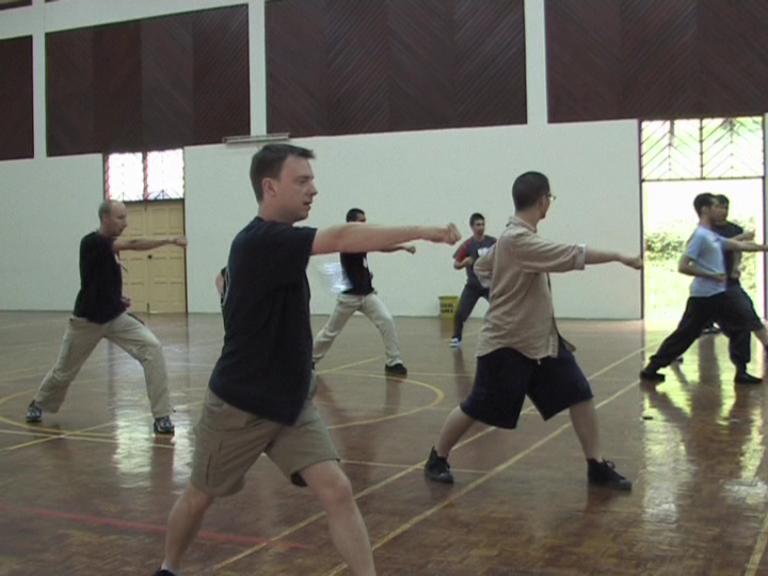PROGRESSION OF ROUTINE, FORM, FORCE AND FLOW

Black Tiger Steals Heart is an excellent pattern to practice exploding force
Question
What would be a good progression in breath control and at which level should each step be taught?
-- Sifu Leonard Lackinger, Shaolin Wahnam Austria
Answer
A good progression in teaching a pattern, a sequence or a set is as follows:
- Routine.
- Form.
- Force.
- Flow.
Breath control is under the section on force or flow.
This was the progression I initially used in my Intensive Shaolin Kungfu Course in teaching Lohan Asks the Way, and it was so successful that now I use this progression to teach any pattern, sequence or set in any course.
This progression of routine --> form --> force --> flow constitutes the force method. If I use the flow method, the progression will be routine --> form --> flow --> force.
First I teach the routine of performing a pattern, a sequence or a set. If it is a single pattern, students must get all the parts of the movement in a correct order, like differentiating yin-yang, weight on the back leg, rotating the waist, and completing in the hand. Initiately they learn the pattern in parts, then they learn it in one smooth flow.
If it is a sequence or a set, students must get the order of the patterns forming the sequence or the set correct.
Next, I teach picture-perfect form. One main reason why some students do not have picture-perfect form is because they have not spent sufficient time on stance training. When ones stances are correct, it is not difficult to have picture-perfect form.
A good guideline to picture-perfect form is attaining the three external harmonies of feet, body and hands.
Having attained picture-perfect form, the next step is to be forceful in the performance of the pattern, sequence or set. I teach students how to explode force, or fa-jing. Black Tiger Steals Heart is an excellent pattern for this purpose. The movement should start from the back leg, the force issues from the dan tian, and the movement completes at the punch which should spiral out.
When students have acquired the skills of fa-jing from Black Tiger Steals Heart, they can apply the same skills to other patterns, including patterns that are normally used for defence.
The final stage in this progress is flow. If it is a pattern, the whole pattern should be performed in one smooth flow, without neglecting force and picture-perfect form. If it is a sequence or a set, the various patterns in the sequence, or the various sequences in the set, should be performed in one smooth flow.
The smooth flow should be executed in one breath, known in Chinese as "yi qi ke cheng", or word-for-word "one-energy-able-accomplished". The structure of the breath is usually "in-follow-follow-follow-explode-swallow".
If there are more than one strike in the sequence, there will be more than one explode-mode in the breath. Hence, a sequence usually ends with a strike, where a practitioner uses the explode-mode of breathing as he explodes force, followed by gently swallowing.
If I use the flow-method in my teaching, the sections "force" and "flow" are reverse, with flow coming before force.
In the flow section, students perform various parts of a pattern, or various patterns of a sequence, in a smooth flow. First, the physical movements flow smoothly. Then the vital energy flows smoothly. They should also perform the flow of form and energy with mental focus. Hence, the students attained the three internal harmonies of elegance, energy and mind. Together with the three external harmonies, they attain the six harmonies.
As their form flows, the students gently use their mind to have more and more energy flow. This brings them to the final stage of force. Hence, they perform the routine correctly with picture-perfect form in a smooth flow with much force.
This progression of routine-form-force-flow in the force method, or routine-form-flow-force in the flow method, is excellent, but it should be used as a guideline, which means modifications or variations should be made to meet expedient needs.
LINKS
